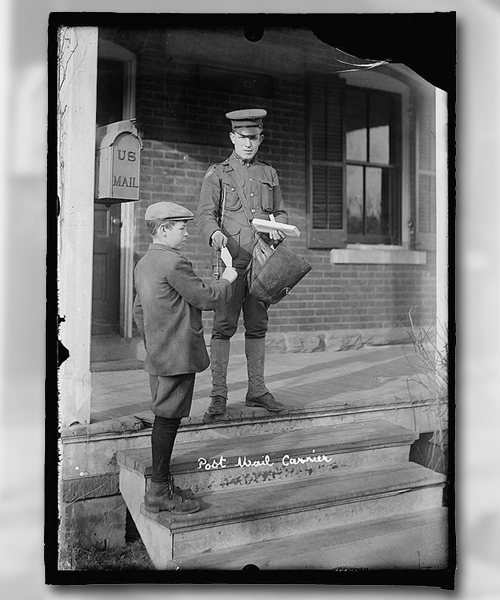To help celebrate last week’s release of the World War I: Turning the Tide stamp, here are five facts about U.S. Mail during the Great War.
1. Mail volume grew significantly. World War I began July 28, 1914, and ended Nov. 11, 1918, although the United States didn’t enter the war until April 1917. During the one-year period that ended in June 1918, U.S. military personnel serving abroad received more than 35 million letters from home.
2. The first U.S. Army Post Offices (APOs) opened. The War Department established APOs to operate independently because, for security reasons, it didn’t want to reveal the locations of overseas military units to the Post Office Department, which made mail delivery problematic.
3. Women began delivering mail in cities. As more men enlisted during World War I, the Post Office department began hiring women for city delivery routes. From November-December 1917, women delivered mail experimentally in several large cities. The next year, women were hired as regular city carriers. However, when the war ended, most of the women letter carriers gave up their city routes to returning veterans.
4. Stamp rates increased. To fund the war effort, the price of a domestic mail stamp was temporarily increased from 2-3 cents, a rate in effect from November 1917-July 1919. Similarly, the rate for postcards went from 1-2 cents.
5. Mail took to the skies. Airmail service began in May 1918. The U.S. Army Signal Corps lent planes and approximately eight pilots for the service until August 1918, when civilian pilots were hired by the Post Office Department to fly the mail.
Got ideas for future editions of “The list”? Email them to uspslink@usps.gov.
